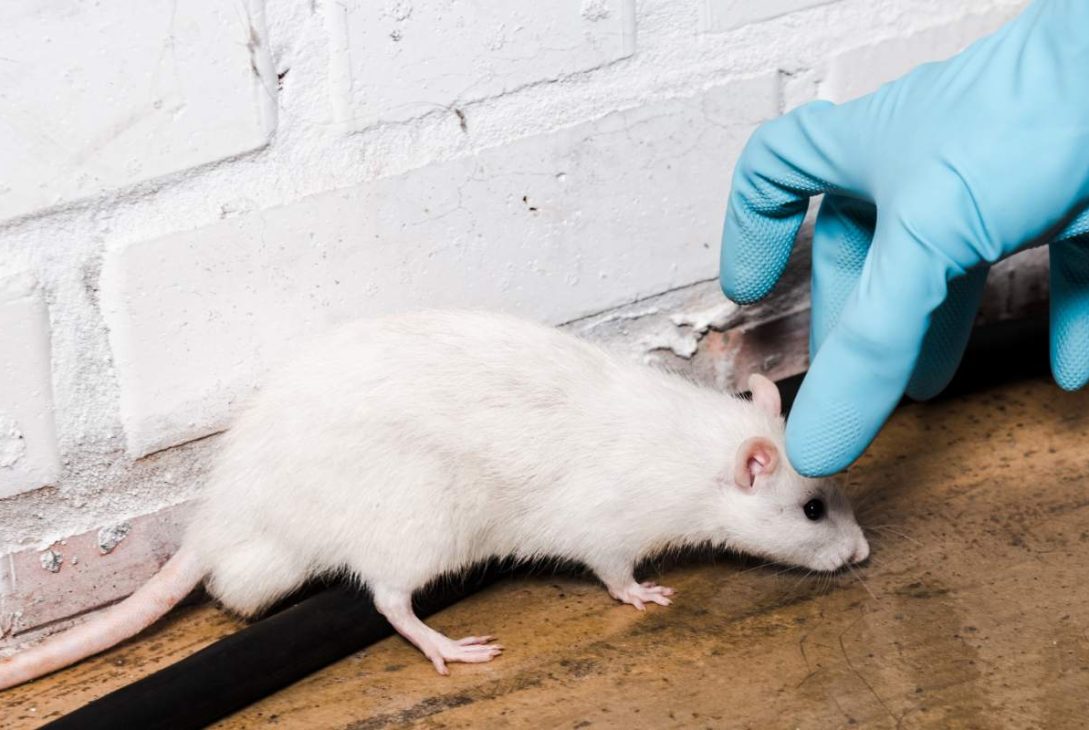Rats are incredibly resilient and adaptable creatures, thriving across the globe. Though their survival skills are remarkable, they often indicate underlying issues. These pests can significantly damage human health, personal property, and the environment.
Being aware of the risks rats pose is crucial for taking preventative measures to safeguard our homes and workplaces.
Health Risks
One of the most significant dangers of rats is the health risk they pose. Rats are known carriers of multiple pathogens that can lead to severe diseases in humans. These diseases can be transmitted directly through contact with rats or indirectly through contaminated food, water, or air.
Leptospirosis
- Rats are common carriers of Leptospira bacteria, which can cause leptospirosis—a disease that affects humans and animals. It is often transmitted through rat urine, which can contaminate water or soil.
- Symptoms of leptospirosis range from mild flu-like signs to severe complications, including liver damage, kidney failure, and even death if left untreated.
Salmonella and Food Poisoning
- Rats frequently invade food storage areas, contaminating food with bacteria such as Salmonella. Humans who consume food contaminated by rat droppings or urine may suffer from severe food poisoning, resulting in nausea, vomiting, and diarrhoea.
Hantavirus
- Hantavirus, a life-threatening respiratory disease, can be contracted through inhaling dust contaminated with rat droppings, urine, or saliva.
- While not all rats carry hantavirus, areas where infected rats are present pose a significant risk, especially if proper cleaning and sanitation are not observed.
Rat-Bite Fever (RBF)
- Rat-bite fever is caused by Streptobacillus moniliformis and is transmitted through bites or scratches from infected rats, or even through handling infected carcasses.
- Symptoms of RBF include fever, chills, muscle pain, and rashes. If left untreated, the infection can lead to serious complications, such as organ damage.
Structural Damage to Buildings
Rats have an instinctive need to gnaw, which helps them control the growth of their continuously growing teeth. Unfortunately, this gnawing habit can be destructive to property.
Damage to Wiring
- Rats often chew on electrical wiring, which can lead to dangerous situations like electrical fires or power outages. Homes, businesses, and even vehicles are at risk.
- Damaged wiring also poses a risk to electronic equipment, causing malfunctions that may be costly to repair.
Destruction of Insulation and Wooden Structures
- Rats may chew through insulation, wooden beams, and support structures in walls and ceilings, weakening a building’s structural integrity over time.
- Chewing through insulation material can lead to increased heating and cooling costs, as well as compromised energy efficiency in the building.
Contamination of Food and Water Supplies
Rats are known to contaminate food and water sources with their droppings, urine, and hair. Even a small infestation can pose a significant risk, as rats tend to multiply quickly, spreading their contamination over a larger area.
Spoilage of Stored Food
- Rats are attracted to stored grains, cereals, and packaged foods. Once they enter a pantry or storage area, they contaminate the food with droppings and urine, making it unsafe for consumption.
- In commercial facilities, rat contamination can lead to large-scale food wastage, leading to financial losses and health risks for consumers.
Contamination of Water Systems
- In some cases, rats may enter water tanks or storage facilities, leading to contamination of the water supply. This can pose health risks, especially if the water is used for drinking or cooking.
- Contaminated water can harbour bacteria, such as Leptospira, increasing the risk of diseases spreading to people.
Impact on Agriculture
Agricultural fields are a common target for rats, where they can cause severe damage to crops and stored produce.
Crop Damage
- Rats feed on a variety of crops, including grains, vegetables, and fruits. A large infestation can result in substantial crop losses, impacting food supply and the income of farmers.
- Rats tend to target young crops and seedlings, which are particularly vulnerable to rodent attacks.
Contamination of Stored Grains and Feed
- Farms that store grains or animal feed in bulk face a high risk of contamination from rats. Rat droppings and urine in animal feed can lead to the spread of disease within livestock populations, affecting the health of the animals and, ultimately, the food supply chain.
Environmental and Ecological Impacts
Rats, particularly non-native species introduced to new environments, can disrupt local ecosystems. In some cases, rat infestations threaten biodiversity by preying on local wildlife or competing for resources.
Threat to Native Species
- On islands or protected ecosystems, rats often pose a threat to native species of birds, reptiles, and small mammals. Rats may eat eggs and young animals, leading to declines in native populations.
- Rat infestations can be especially harmful to endangered species, which may already be vulnerable to environmental changes or habitat loss.
Damage to Plant Life
- Rats may also destroy plant life by feeding on seeds, bulbs, and young plants. In sensitive ecosystems, this can lead to erosion, altered landscapes, and disruptions in the natural balance of the ecosystem.
Mental Health and Emotional Well-Being
Living with a rat infestation can take a toll on mental health. The constant stress and anxiety caused by the presence of rats can lead to sleep disturbances and a sense of discomfort in one’s own home.
Anxiety and Stress
- People often experience heightened anxiety due to the potential health risks associated with rats and the stress of eradicating an infestation.
- The sound of rats scratching within walls, coupled with the unpleasant odor they produce, can make a home feel uninviting and lead to stress and sleep disturbances.
Social Stigma
- In some communities, a rat infestation can lead to a social stigma, as rats are often associated with uncleanliness. Homeowners and businesses may face judgment from neighbours, adding to the emotional burden of addressing a rat problem.
Financial Costs of Rat Infestations
The presence of rats can lead to significant financial consequences, from property damage to medical costs and professional pest control services.
Property Repair Costs
- Repairing structural damage caused by rats, such as fixing gnawed wires, replacing insulation, or repairing wooden structures, can be costly.
- Business owners might face additional costs in the form of potential lawsuits or fines if rat infestations are not controlled in compliance with health and safety regulations.
Pest Control Services
- Addressing a rat infestation often requires professional pest control services, which may involve trapping, poisoning, or other rodent control techniques. Regular follow-up and maintenance are also typically necessary to prevent re-infestation.
Medical Expenses
- Health issues caused by rat-transmitted diseases can lead to unexpected medical expenses, particularly if multiple family members fall ill due to contamination in the home.
Conclusion
Rats pose numerous dangers to health, property, agriculture, and the environment. Their ability to carry and spread diseases makes them a serious threat to human health, while their destructive behaviour leads to property damage and financial burdens. Rats can also disrupt local ecosystems and impact biodiversity, especially in sensitive environments.
Addressing and preventing the dangers that rats may cause requires vigilance and proactive measures. Proper sanitation, sealing entry points, and using pest control services can help prevent these dangers and maintain a safe, healthy environment. By understanding the risks posed by rats, individuals and communities can work together to manage and minimize the threat these resilient pests pose.









